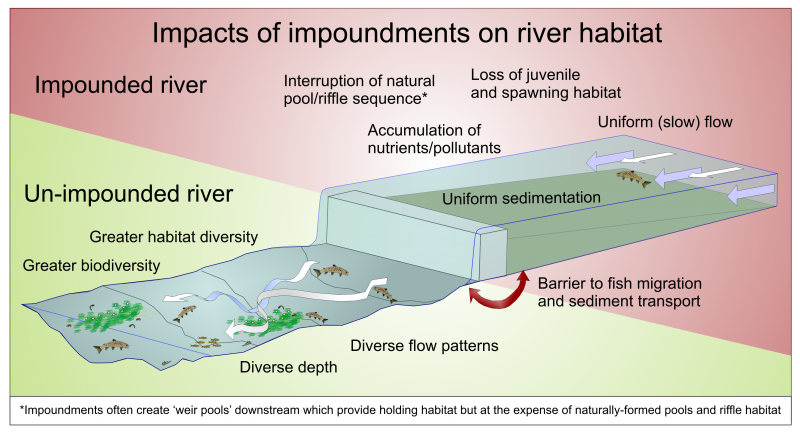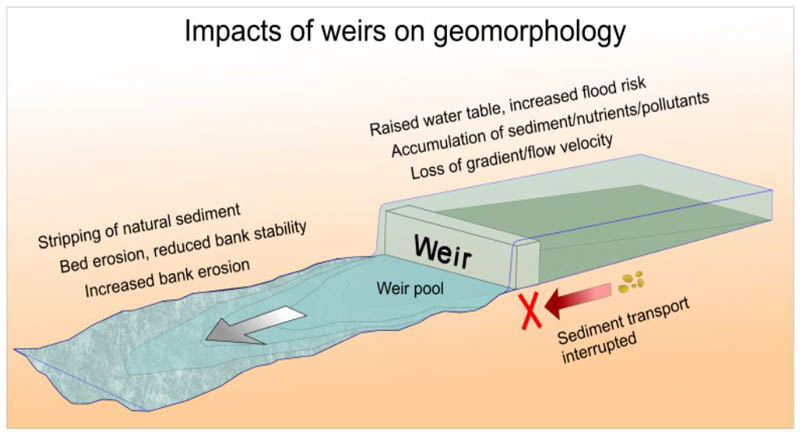Many of our rivers have historically been heavily modified by overwidening and straightening for navigation, industry, hydropower and other forms of land use. Modifying river channels this way has reduced the quality of habitat available to support fish, invertebrates and other forms of aquatic life. Secondly, no ‘meanders’ (bends in the river) results in a lack of diversity in water depth and as a result, a absence of varied habitat types (pools and riffles) which are crucial for the existence of various species. Thirdly, a lack of woody debris means there is nothing to catch the excess of sediment which is an issue in many rivers, as it settles on riverbed gravels smothering fish eggs and invertebrates.
One technique which promotes in-stream habitat diversity is the installation of ‘brushwood mattresses’ and ‘flow deflectors’. These structures are positioned within the channel to pinch the channel and accumulate with sediment, creating flow diversity. Diverse flow conditions begin to erode and deposit materials in various sequences, promoting the formation of pools and riffles.



